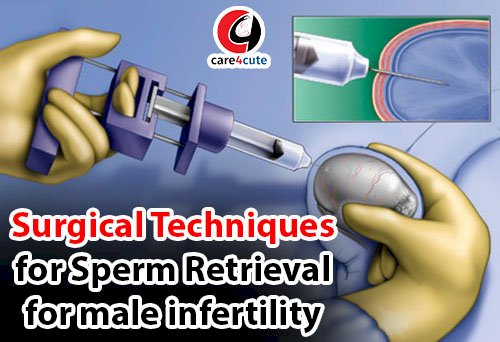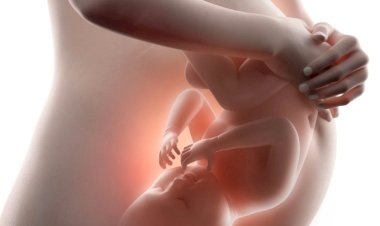Surgical Techniques for Sperm Retrieval for male infertility

Surgical Techniques for Sperm Retrieval for male infertility
In recent years there are two major successes in the male infertility problems. First is the ICSI means Intra Cytoplasmic Sperm Injection for the treatment of male infertility cause of severely abnormal semen quality.
The second is the extended of ICSI to azoospermic ( Absence of sperms) males and the demonstration that spermatozoa (the mature motile male sex cell) retrieved from either the epididymis (tube structure that connects a testicle to a vas deferens in the male) or the testis were capable of normal fertilization and pregnancy.
Many sperm retrieval techniques have been developed to retrieve sperm from the azoospermic men. Surgically-retrieved spermatozoa can be used to get pregnancy through assisted reproductive techniques (ART), i.e., in vitro fertilization and ICSI.
Here, we review the different techniques for collection of epididymal and testicular spermatozoa and their success rates in different clinical conditions. The reproductive potential of the male gamete collected from the epididymis or the testis, and used for assisted fertilization is also reviewed.
RETRIEVAL TECHNIQUES:-
Percutaneous Sperm Retrieval Methods (PSRM):-
In 1994, the use of the percutaneous approach to retrieve sperm from the epididymis was first explained by Craft and Shrivastav. After 2 Years in 1996, Lewin et al reported the use of testicular fine needle aspiration to retrieve sperm from the testis.
Percutaneous collections are often undertaken under local anesthesia only or with help of intravenous sedation. Percutaneous sperm collection can be either diagnostic or therapeutic. Initially it is used to confirm the presence of viable spermatozoa before ICSI. Later it is carried out at the same day of oocyte collection or one day before.
Percutaneous Epididymal Sperm Aspiration (PESA):-
In PESA, a simple procedures done where a needle is used to collect sperms from the testicle or epididymis. The epididymis is an organ located behind the testicle and where sperm mature and develop the ability to move. The epididymis can be enlarged after a vasectomy or in other medical conditions where there is a blockage. This procedure can be performed with only mild sedation and local anesthetic. A fine needle is inserted into the testicle or epididymis and an attempt is made to collect sperm. The sample is immediately examined under a microscope to look for healthy and motile sperms. These sperms can be used immediately to fertilize an egg or can be frozen for use at a later time.
These techniques can be used as a first line management for sperm collection. PESA is most effective when trying to collect sperm in a man in whom vasectomy has been done and the epididymis is enlarged. The benefits of PESA are that it is more painless and there no need of an incision in the scrotum or a general anesthesia. The risks factor during or after procedure includes bleeding, damage to the epididymis and not being able to retrieve sufficient sperm. If this technique fails, sperm may be retrieved by using more advanced methods.
Microsurgical Sperm Retrieval Techniques (MSRT):-
Microsurgical sperm retrieval can be performed under either local anesthesia in association with intravenous sedation or epidural anesthesia. Operating microscope and microsurgery techniques are used during these procedures.
Microscopic Epididymal Sperm Aspiration (MESA):-
MESA is a method for collecting sperms that involves using a surgical microscope to open the small tubes within the epididymis and look for sperm. This technique works better in conditions where sperms are being produced in high numbers but are not moving from the testicle to the ejaculate. Such conditions like a cystic fibrosis, prior vasectomy, blockage of the seminal vesicles, prior hernia repair with mesh and immotile cilia syndrome. This is the favoured method when collecting sperms after a vasectomy.
A surgical microscope and special skills are required to identify the tubes which most likely contais sperms and the samples are taken immediately to examine and look for sperm. Sperm collected from the epididymis is generally considered better quality than sperm collected directly from the testicle because they spent more time to mature.
This procedure will require a general or spinal anesthesia and involves a minor incision in the scrotum to gain access to one or both testicles. The retrieved sperms can be used immediately or frozen for use at a later time. If no sperm are found then it’s important to look inside the testicle for viable sperm, this procedure is called TESE or testicular sperm extraction.
Testicular Sperm Extraction (TESE):-
TESE is very likely to the MESA technique. In TESE, the tissue is taken directly from the testicle and examined for the viable sperm. This method is very successful in cases of obstructive azoospermia where sperms are blocked by tubes for transporting sperm from the testicle to the ejaculate. TESE may also be very useful in patients with non-obstructive azoospermia as well. There are some kinds of genetic, infection-related and hormonal conditions that lead to decrease the sperm production that can be uncovered through surgery.
TESE or micro-TESE (performed with a microscope) needs general or spinal anesthesia and a minor incision on the scrotum to gain access to the testicles. Depending on the underlying disease, the testicle is either incised in many locations to collect sperm or sometimes completely opened to look all of the sperm-producing cells. Many samples are taken and immediately examined for the presence of viable sperm. Any sperm found can be used immediately to fertilize with an egg or they can be frozen for later use. The testicle is then repaired and placed back into the scrotum. The testicle is able to function normally after the procedure and can continue to produce testosterone. This procedure has been successful in many conditions such as Klinefelter’s syndrome and congenital absence of the vas deferens.
Complications of These Techniques:-
Percutaneous and open (microsurgical or conventional) sperm collections are often done on an outpatient basis. Patients usually resume their normal activities with in 1 day after percutaneous collections, and it will take 2-3 days following open surgical retrievals. Scrotal ice packing and scrotal supporter is given to decrease local edema and alleviate pain. Patients should restrain from ejaculation and routine physical activity upto 7-10 days. Oral analgesics and anti-inflammatory drugs are normally prescribed for pain and scrotal swelling which can range from minimal to moderate.
The incidence of post-sperm retrieval complications are 0-70% and include persistent pain, swelling, infection, hydrocele and hematoma. Complication rates are different according to the sperm collection techniques.
PESA complications are minimal, although fibrosis at the aspiration site is often seen. Intra testicular hematoma can be observed in most patients undergoing TESE with single or multiple biopsies based on ultrasounds results done after surgery, but they often self resolve without any harm to testicular function.
However, it has been noticed that large-volume conventional TESE is associated with a higher risk of transient or even permanent decrease in serum testosterone levels due to testicular devascularization. The incidence of complications after micro-TESE technique is lower than conventional TESE. During micro-TESE, reveal of testicular vessels under the tunica albuginea is made prior to the placement of an incision into the testis. The use of optical magnification and microsurgical method allow the preservation of intra testicular blood supply as well as the revealing the tubules which more likely harbor sperm production.
However, a continuous decrease in serum testosterone has been noted after micro-TESE in men who already have diminished androgen production, such as Kleinfelter Syndrome patients. Nonetheless, testosterone levels return to the pre-surgical values in most patients in 12-month after procedure. It is recommended that sperm collections should be performed by surgeons who have training in these procedures because of the potential serious postoperative complications.






































Comments (0)